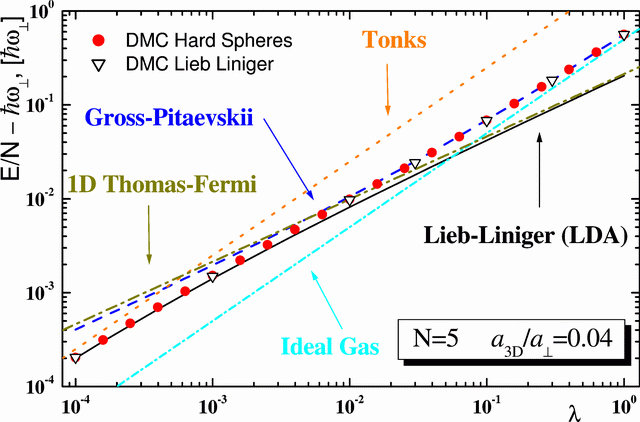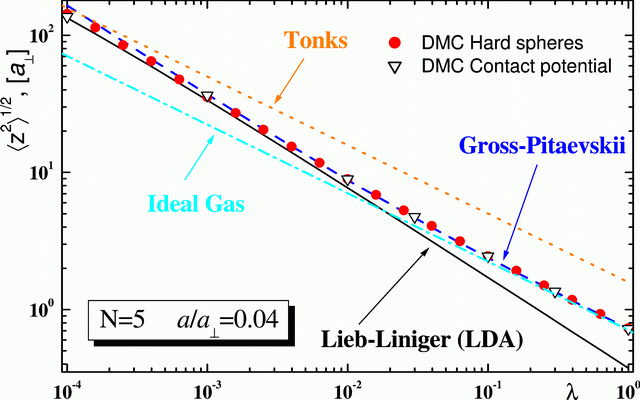In Figs. 3.3-3.4 we present results for
![]() ,
corresponding to a less tight transverse confinement or, equivalently, to a smaller
scattering length. By decreasing
,
corresponding to a less tight transverse confinement or, equivalently, to a smaller
scattering length. By decreasing
![]() we enter more deeply in the universal
regime where the theory of pseudo-potentials applies and we find no difference
between HS and SS results. Further, as for the
we enter more deeply in the universal
regime where the theory of pseudo-potentials applies and we find no difference
between HS and SS results. Further, as for the
![]() case, we find no
difference between DMC results obtained starting from Hamiltonian (3.1) and
from the 1D Hamiltonian (3.8). Compared to Figs. 3.1-3.2,
the cross-over between mean field and Lieb-Liniger occurs for smaller values of
case, we find no
difference between DMC results obtained starting from Hamiltonian (3.1) and
from the 1D Hamiltonian (3.8). Compared to Figs. 3.1-3.2,
the cross-over between mean field and Lieb-Liniger occurs for smaller values of
![]() . For the smallest values of
. For the smallest values of ![]() beyond mean-field effects become
evident, though one would need to decrease
beyond mean-field effects become
evident, though one would need to decrease ![]() even further to enter the
Tonks-Girardeau gas regime.
even further to enter the
Tonks-Girardeau gas regime.

|

|